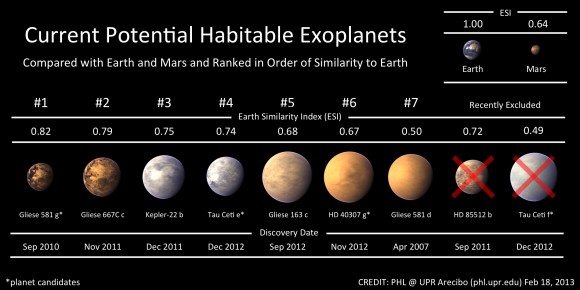Planetary habitability is the measure of a planet’s or a natural satellite’s potential to develop and sustain life. Life may develop directly on a planet or satellite or be transferred to it from another body, a theoretical process known as panspermia. As the existence of life beyond Earth is currently unknown, planetary habitability is largely an extrapolation of conditions on Earth and the characteristics of the Sun and Solar System which appear favourable to life’s flourishing—in particular those factors that have sustained complex, multicellular organisms and not just simpler, unicellular creatures. Research and theory in this regard is a component of planetary science and the emerging discipline of astrobiology.
An absolute requirement for life is an energy source, and the notion of planetary habitability implies that many other geophysical, geochemical, and astrophysical criteria must be met before an astronomical body can support life. In its astrobiology roadmap, NASA has defined the principal habitability criteria as “extended regions of liquid water, conditions favourable for the assembly of complex organic molecules, and energy sources to sustain metabolism.”
In determining the habitability potential of a body, studies focus on its bulk composition, orbital properties, atmosphere, and potential chemical interactions. Stellar characteristics of importance include mass and luminosity, stable variability, and high metallicity. Rocky, terrestrial-type planets and moons with the potential for Earth-like chemistry are a primary focus of astrobiological research, although more speculative habitability theories occasionally examine alternative biochemistries and other types of astronomical bodies.
The idea that planets beyond Earth might host life is an ancient one, though historically it was framed by philosophy as much as physical science. The late 20th century saw two breakthroughs in the field. The observation and robotic spacecraft exploration of other planets and moons within the Solar System has provided critical information on defining habitability criteria and allowed for substantial geophysical comparisons between the Earth and other bodies. The discovery of extrasolar planets, beginning in the early 1990s and accelerating thereafter, has provided further information for the study of possible extraterrestrial life. These findings confirm that the Sun is not unique among stars in hosting planets and expands the habitability research horizon beyond the Solar System.
On November 4, 2013, astronomers reported, based on Kepler space mission data, that there could be as many as 40 billion Earth-sized planets orbiting in the habitable zones of sun-like stars and red dwarf stars within the Milky Way Galaxy. 11 billion of these estimated planets may be orbiting sun-like stars. The nearest such planet may be 12 light-years away, according to the scientists.
